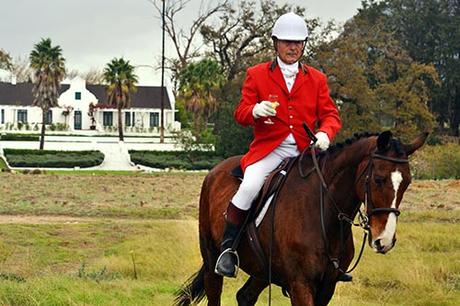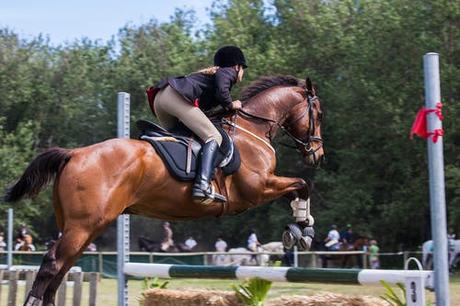Many children dream of the time when they'll be able to ride their own horse. If you're someone who gets to live this fantasy, then you'll want to be dressed right. You'll want to be stylish, but will also want to dress with an eye for safety and comfort. Falls can cause serious injury and incorrect gear can result in chafing.

You'll also want to be properly dressed based on the style of riding you do, whether it's English or Western, as well as for your expertise level. Beginner level equestrians dress differently to professional athletes. Here are some clothing items you should make sure to check on your list before going riding.
1. Headgear
This is definitely one piece of gear you'll want to put safety first, rather than be fashion-forward. The headgear should be ASTM/SEI approved. A fall can result in potentially life-threatening injuries, so you will want to protect your head. It is important that you are measured for your horse riding helmet individually to make sure it fits and that it covers all areas of your head. Some important rules to observe with your riding helmet:
- Don't leave your helmet in direct sunlight
- Don't drop your helmet frequently
- Replace your helmet if you've had a fall or accident
This is so your helmet isn't weakened and you have the best protection available to you.
2. Pants
There have been several advances in materials for equestrians over the last few decades as well as changes in fashion. English-style equestrians traditionally sport breeches.

For less formal competitive riding or casual riding, looks can be quite sporty. Ideally, you want breeches that are fitted, so they don't catch on anything while you're out riding. You also want pants that are double-lined, so your inner legs are not chafed and you have a better grip on your mount.
For Western-style riding, blue jeans have always been the mainstay, and there several brands designed specifically for riding
3. Boots
For English style riding, there are two types of boots, paddock boots and tall boots. These can be used for Western riding, but you might want to get cowboy boots if you're a traditionalist. For advice on riding boots for both styles, you can check Ariat, which features a variety of models for all riders. Tall boots are typically used at more formal riding events and usually extend upwards toward the knee, with a zipper down the back. Paddock boots end around the ankle and are worn with half chaps to prevent your leg from chafing. Cowboy boots have become expensive fashion statements, so be sure you don't mind working around a horse in the ones you choose.
Ideally, your boots should have:
- Heels that are one to one and a half inches. This is so your foot doesn't slip through the stirrup
- Lightly textured soles. If you experience a fall, you don't want your boot caught in the stirrup, as might happen with a more heavily textured sole.
- Support the ankle and be sturdy. Horses occasionally tend to step on riders' toes.
4. Shirts
Your shirts are another item that shouldn't be too baggy so that they can catch on your saddle or on anything else while you're riding. If you're out riding in a heavily forested area or during the winter, brightly-colored shirts with reflective elements are recommended.
Shirts for formal events are decidedly dressier than those for less formal or casual riding and may even have to conform with sporting rules if you want to take part in the event.
For casual riding, you can wear polos, T-shirts, short-sleeved shirts, or even tank tops in hot weather.
5. Jackets
Jackets harken back to a time when equestrian riding was a male dominated, upper class, military and hunting activity. Some of the more formal English style equestrian events, like dressage, have strict rules as to the color and cut of jackets to be worn during competition.
For casual riding, it is more likely you'll be wearing a jacket in cooler weather to keep warm.
6. Gloves
Gloves will help insulate your hands from chafing when handling the horse's reins over long rides and will also protect against cold during autumn and winter. They come in a variety of materials and when selecting them, you should think of comfort, breathability, and long-term durability.
Whether you're a beginner equestrian or a more experienced rider, whenever you are shopping for gear, these are the basic elements you should consider. Remember to buy outfits that suit your style and your budget, but also keep you safe and comfortable regardless of the equestrian activity you undertake.
Fraquoh and Franchomme
P.S. We want to hear from you! Do you enjoy riding? What are your go-to riding clothes? Why? Share your feedback, questions or thoughts in the comments below! For more articles on style, fashion tips and cultural insights, you can subscribe to Attire Club via e-mail or follow us on Facebook, Twitter or Instagram!

